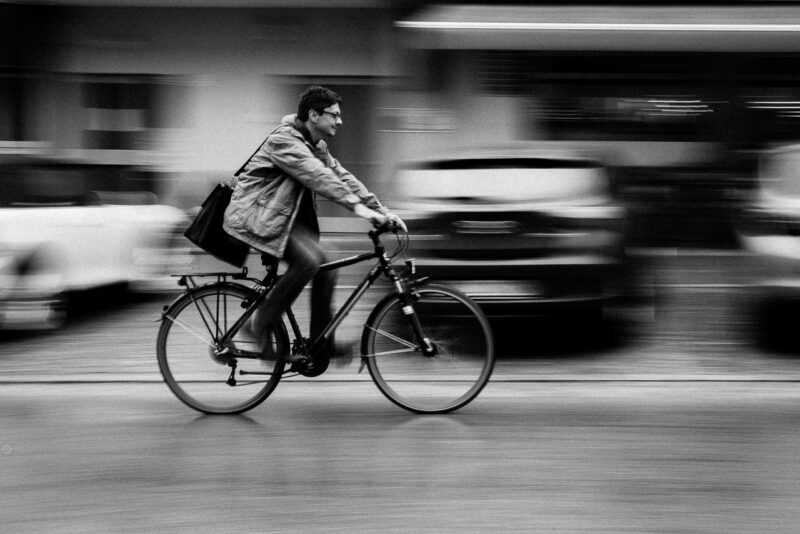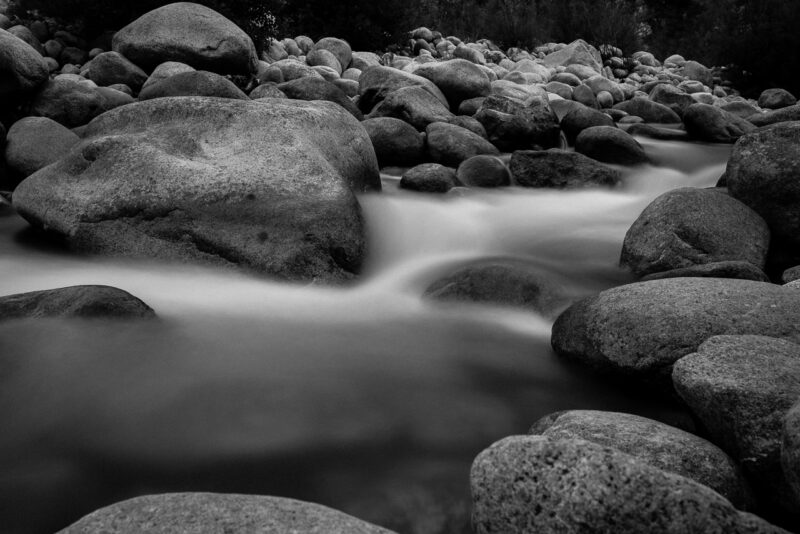
In the article “Correct exposure” I explained the dependence of time, aperture and ISO. In most cases, too little light is the problem. When it gets dark, either the ISO value has to be set higher, the aperture opened wider or the shutter speed increased. No matter which wheel you turn, it always has an effect on the result in the end.
The influence of the exposure time is most clearly visible when the time was too long and the shot is blurred (and yes, this still happens to me in the heat of the moment).
There is a rule of thumb as to when you can still take a picture without blurring. It is a very rough rule and also depends on how much coffee the photographer has drunk beforehand.
1/Focal length
If I shoot with a wide-angle lens, e.g. 35mm, then I should be able to expose 1/30 second handheld. As I said, this is really only a rough guide. If I use a telephoto lens of 200mm, then it becomes critical at times longer than 1/250 second.
Modern cameras and lenses now have a built-in image stabilizer. This can often increase the aperture by a few stops, but you still shouldn’t dance while taking the picture – or should you?
A blurred image because the camera has moved does not necessarily mean a bad image. If you follow an object with the camera and release the shutter, you can achieve very dynamic results. The cyclist only appears to be riding so fast because the background is blurred due to the movement of the camera.

1/13″ f/8 50mm
If you place the camera on a tripod and choose a long exposure time, you will also get exciting pictures. Water, which looks very choppy with a short exposure, suddenly becomes very soft and gentle with a long exposure time. Other subject ideas include cars at night, clouds and large crowds of people in a busy square.

13″ f/11 35mm
But very fast shutter speeds also have their appeal, suddenly revealing scenes that usually pass by far too quickly for our eyes.

1/3200″ f/5.6 135mm
